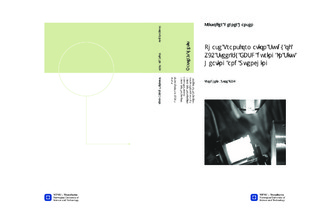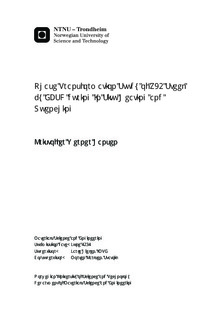| dc.contributor.advisor | Hjelen, Jarle | nb_NO |
| dc.contributor.advisor | Karlsen, Morten | nb_NO |
| dc.contributor.author | Hansen, Kristoffer Werner | nb_NO |
| dc.date.accessioned | 2014-12-19T13:26:33Z | |
| dc.date.available | 2014-12-19T13:26:33Z | |
| dc.date.created | 2012-11-08 | nb_NO |
| dc.date.issued | 2012 | nb_NO |
| dc.identifier | 566365 | nb_NO |
| dc.identifier | ntnudaim:8166 | nb_NO |
| dc.identifier.uri | http://hdl.handle.net/11250/249093 | |
| dc.description.abstract | Arctic steels, like the API X70 steel explored in this master thesis, are developed to withstand very low temperatures, with a ductile/brittle transition temperature below −60◦C. However, during welding, brittle phases like martensite-austenite (M-A) islands may form in the heat affected zone (HAZ). In this master thesis in situ heat treatment and quenching experiments have been combined with electron backscatter diffraction (EBSD) inside a field emission scanning electron microscope in order to simulate a second weld cycle simulation. In conjunction with this a quenching device has been designed with respect to an existing hot stage.Inside the SEM, it was found difficult to recreate the characteristic microstructure of API X70 steel from a traditional second cycle thermal weld simulation. This was probably due to the slow heating rate and the excessive high temperature holding time. The developed quenching device was based on gas quenching and produced a steel sample cooling time from 600◦C to 400◦C, ∆t6/4, of approximately 6.5 seconds in every experiment. As a result of the gas quenching substantial amounts of oxide contamination, covered the sample surface following the experiments. This contamination layer produced artifacts, such as unreasonable amounts of austenite in the EBSD phase maps.Despite the quenching, islands of austenite (FCC) observed at elevated temperatures transformed into a low strain BCC structure. Some austenite islands showed a memory- effect during phase transformation, while others adapted the orientation of the surround- ing structure. No retained austenite was observed in the API X70 steel after the in situ gas quenching, probably due to insufficient cooling rates. | nb_NO |
| dc.language | eng | nb_NO |
| dc.publisher | Institutt for materialteknologi | nb_NO |
| dc.subject | ntnudaim:8166 | no_NO |
| dc.subject | MTMT Materialteknologi | no_NO |
| dc.subject | Materialutvikling og -bruk | no_NO |
| dc.title | Phase Transformation Study of X70 Steel by EBSD during In Situ Heating and Quenching | nb_NO |
| dc.type | Master thesis | nb_NO |
| dc.source.pagenumber | 114 | nb_NO |
| dc.contributor.department | Norges teknisk-naturvitenskapelige universitet, Fakultet for naturvitenskap og teknologi, Institutt for materialteknologi | nb_NO |

